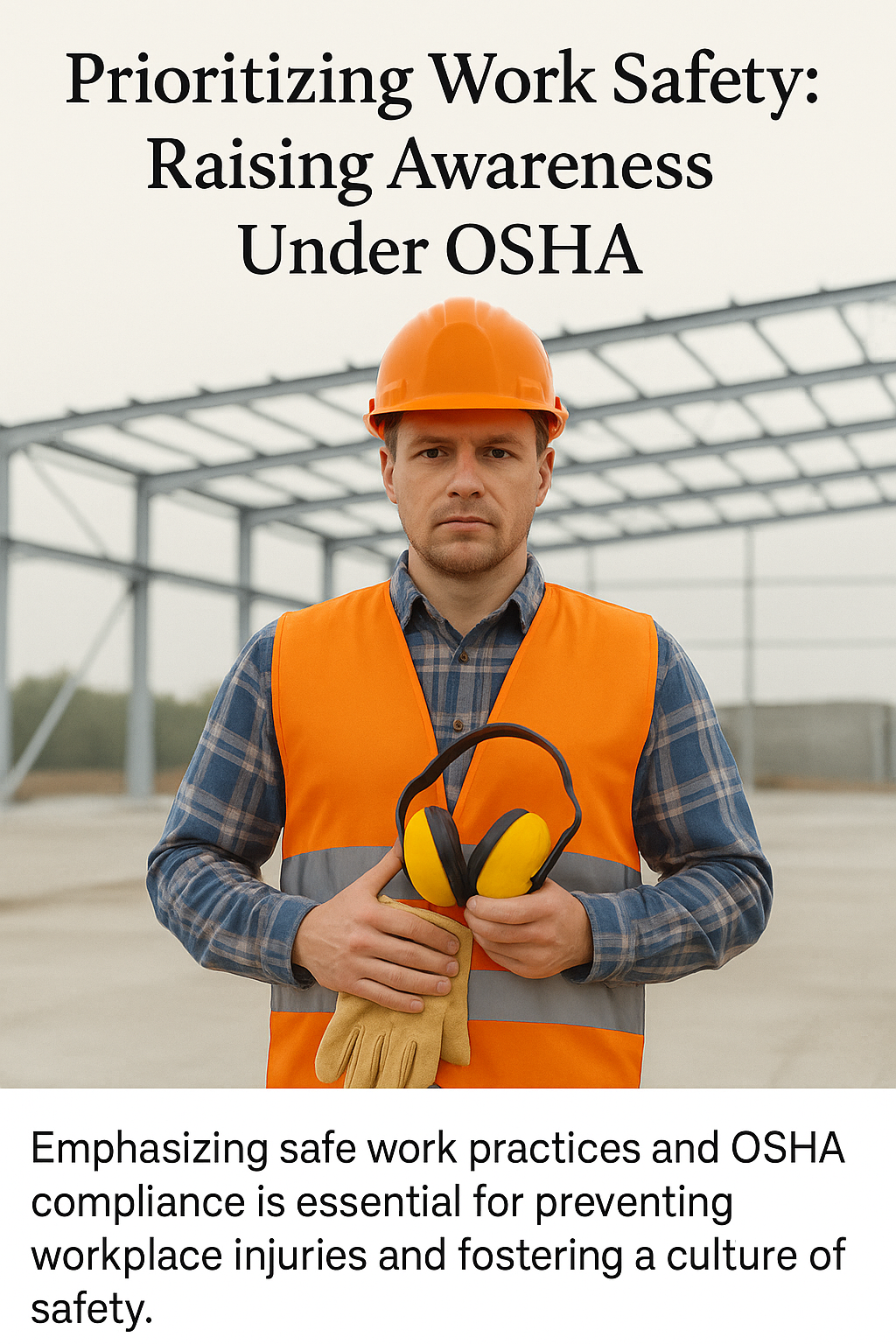Prioritizing Work Safety: Raising Awareness Under OSHA

Workplace safety is more than a checklist—it's a culture. Under the Occupational Safety and Health Administration (OSHA), businesses are legally and ethically required to protect employees from preventable hazards. OSHA standards set the baseline for safety procedures, equipment use, emergency response, and training expectations across industries—from construction to manufacturing to logistics.
In high-risk environments like construction sites, non-compliance can result in serious injuries, fatalities, fines, and lawsuits. Implementing OSHA-compliant practices—such as proper use of PPE, fall protection systems, machine guarding, and clear signage—significantly reduces incident rates.
Training is central to compliance. Employers must not only provide access to safety gear but ensure every worker understands how to identify and report hazards. Regular safety audits, toolbox talks, and refresher training sessions foster a proactive approach to risk management.
With OSHA fines reaching up to $16,131 per serious violation (as of 2024), the cost of neglecting safety is steep. More importantly, the human cost of injuries or loss of life is immeasurable.
Investing in safety is not just a regulatory obligation—it's a strategic decision that builds trust, retains staff, and drives operational resilience. Businesses that champion OSHA-aligned practices aren’t just following rules; they’re actively protecting their most valuable asset—their people.
- Art
- Causes
- Crafts
- Dance
- Drinks
- Film
- Fitness
- Food
- Games
- Gardening
- Health
- Home
- Literature
- Music
- Networking
- Other
- Party
- Religion
- Shopping
- Sports
- Theater
- Wellness


